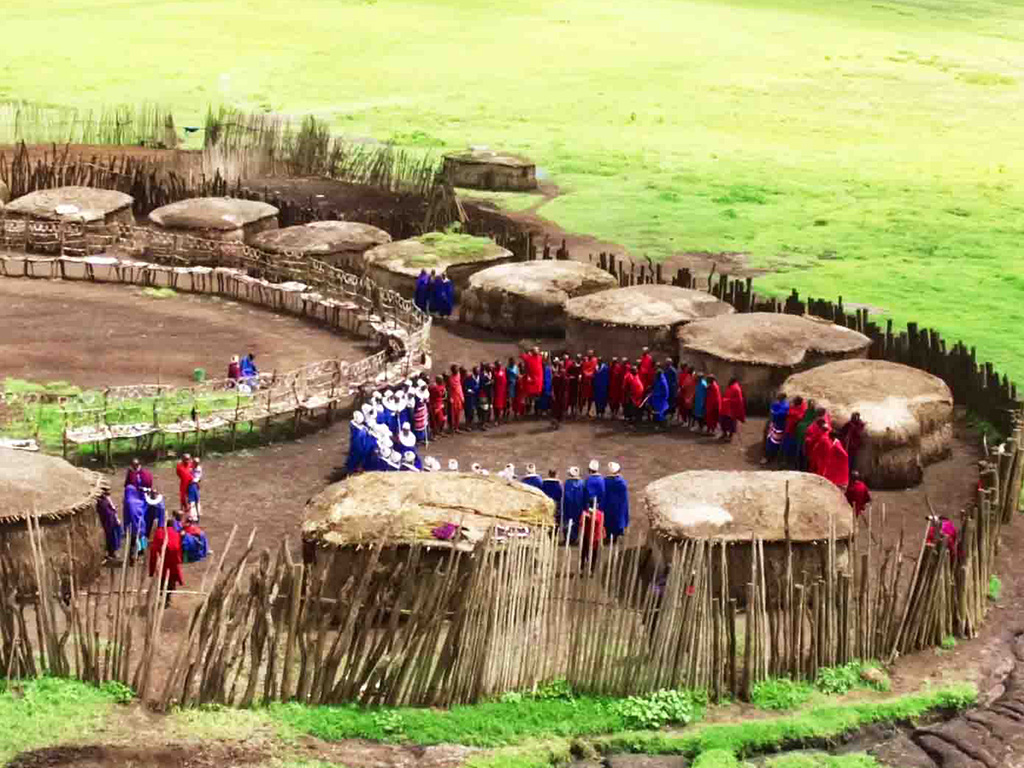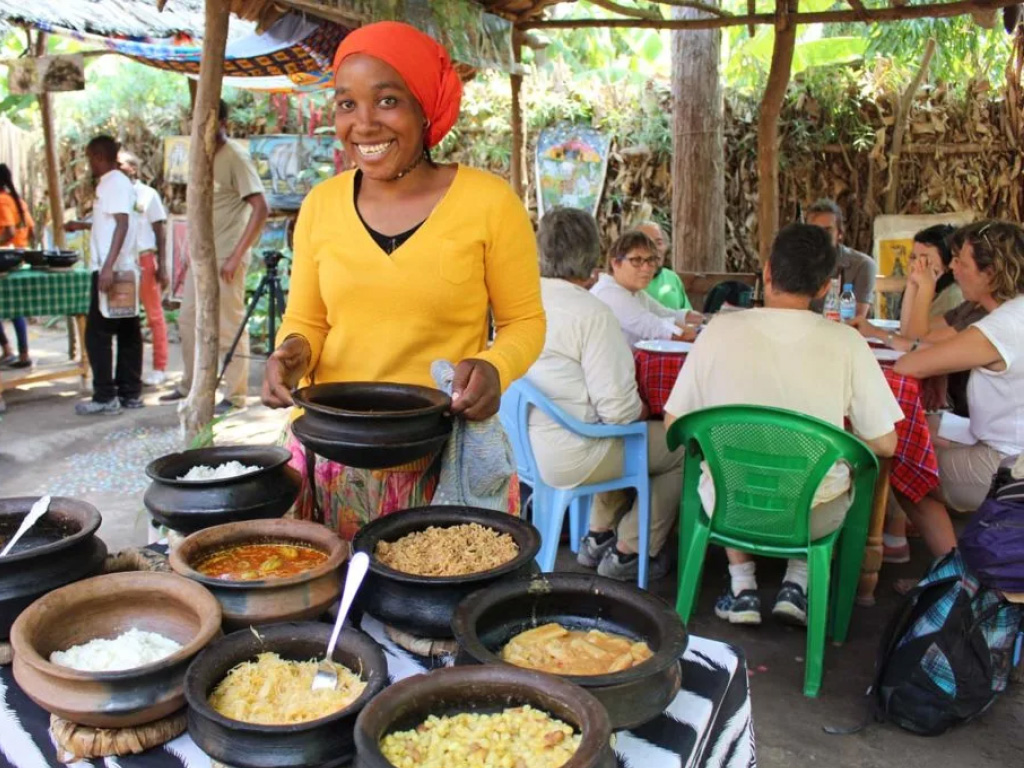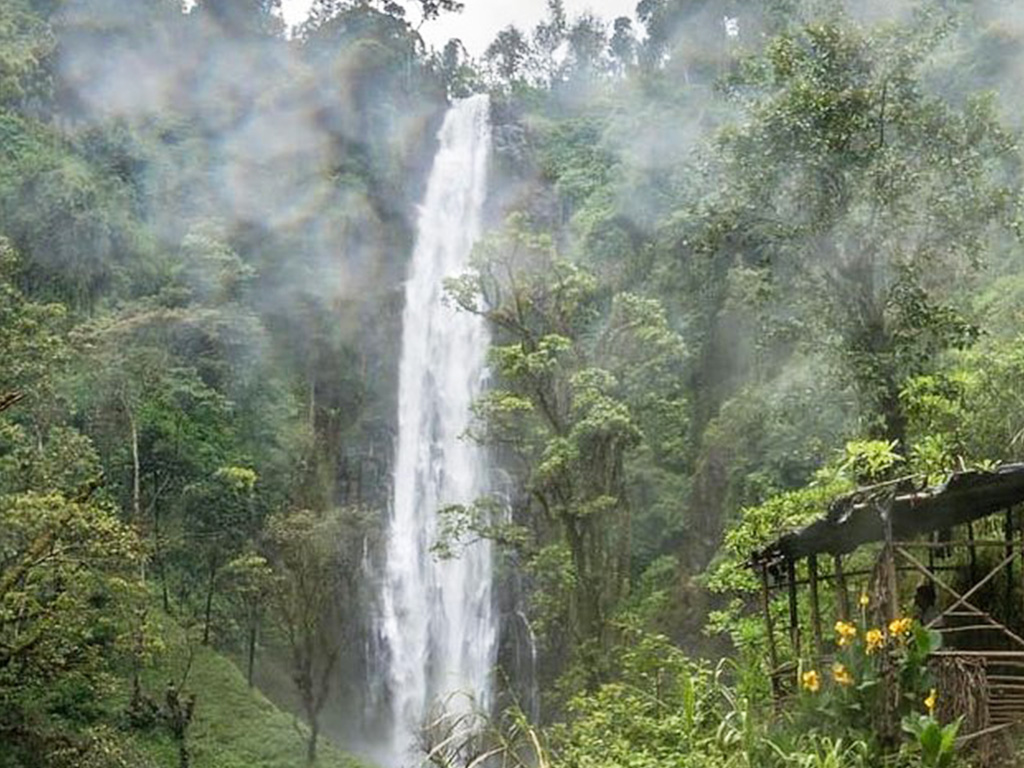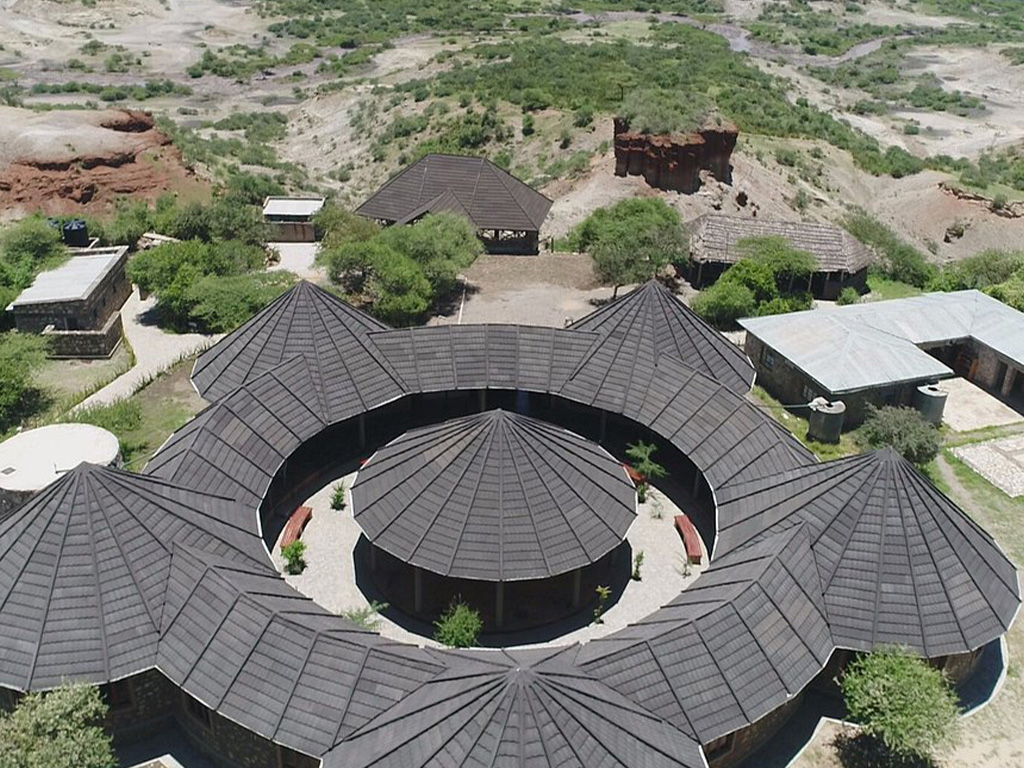Cultural Tour
Tanzania is home to over 122 tribes, each with its own language and culture. The country has successfully unified these diverse groups into a harmonious nation. We are pleased to offer a visits to various tribal villages, which can be arranged as a day trips or added to a safari itinerary. These authentic experiences showcase the daily life of the tribe members and provide a memorable opportunity to deepen your understanding of the country. Some of the popular cultural tour which may be tailored into visitor itineraries include.
Maasai Boma in Ngorongoro Conservation Area
The Maasai of northern Tanzania are one of the most renowned ethnic groups in the region, known for their strong attachment to cultural values. The Ngorongoro Conservation Area is home to the pastoral Maasai, who move with their herds of cattle, sheep, goats, and donkeys in search of pasture and water. Many safari guests visiting Ngorongoro enjoy including a visit to a Maasai Boma, located on the western slopes of the Ngorongoro Highlands about five kilometers off the main road to the Serengeti. This visit is one of the most famous cultural experiences for guests.
During the visit, clients will be shown around the Maasai Boma and are invited to explore the huts where Maasai families live, gaining insight into their culture. The huts, typically built by women, are constructed from wood, mud, and cow dung.


Hadzabe Tribes at Lake Eyasi
Visiting the Hadzabe tribe at Lake Eyasi offers a fascinating day trip. Lake Eyasi is a seasonal shallow salt lake south of the Ngorongoro Highlands, making it a paradise for bird lovers. Visitors can spot species such as the African spoonbill, flamingos, gray-headed gulls, great white pelicans, and pied avocets. The trip includes a visit to the Hadzabe bushmen, with half-day or full-day excursions available.
The Hadzabe are a nomadic society of hunter-gatherers, known for their distinctive click-tongue language. With an estimated population of fewer than 1,200, this tribe lives in small groups of about 20-30 members. The Hadzabe have a largely egalitarian society where all members are considered equal and do not own livestock. The men typically hunt in pairs or small groups using bows and arrows, targeting small to large birds, small mammals like squirrels, and larger mammals such as serval cats, baboons, and even warthogs. The women forage in larger groups, gathering berries, tubers, greens, and honey.
Visiting Datoga Tribe
After visiting the Hadzabe, we located a local Datoga tribe. The Datoga live in the same region but are quite different from the Hadzabe; they are a pastoralist society known for their craftsmanship. The Hadzabe often trade honey and other foods for arrows made by the Datoga. During your visit to the Datoga tribe, you will have the opportunity to sit inside their homes, meet with the women of a family (the Datoga are a polygamous society where women choose subsequent wives), and discuss their lifestyles. You will also learn how they grind maize for food and witness the incredible skill with which the men melt down scrap metals to create arrows, spears, and knives.


Visit the Chaga Tribe
The Chaga tribe lives on the slopes of Mountain Kilimanjaro and is the third largest tribe in Tanzania. This area provides rich volcanic soils for agriculture and an endless source of pure spring water. The Chaga way of life revolves around agriculture, utilizing irrigation on terraced fields and using oxen to plow the land. The Chaga cultivate yams, beans, maize, and bananas, and they are well known for their Arabica coffee.
Materuni Waterfall
At Materuni Village, travelers can explore the Chaga tribe and their natural heritage. The visit includes a hike to the waterfalls and a coffee tour. First, you will visit the waterfalls. Along the way The guide will inform you about the Chaga culture, village life, and the surrounding fauna and flora. The views are breathtaking, and with some luck, you might see the summit of Kilimanjaro. The waterfalls are over 80 meters high, and the pool at the bottom is perfect for a refreshing swim, so don’t forget your swimwear


The Olduvai Gorge
Often referred to as “The Cradle of Humankind,” is the site where Dr. Louis Leakey discovered the skull of Zinjanthropus, or “Nutcracker Man,” in 1959. This hominid, believed to have lived 1.75 million years ago, was later reclassified as Australopithecus boisei. It had a massive skull with a small brain (500 cc) and large teeth. Several months later, Dr. Leakey found another fossil hominid in the same excavation layer, named Homo habilis, or “handy man.” Although smaller than the “Nutcracker Man,” Homo habilis had a larger brain (600 cc) and was capable of making simple stone tools.
